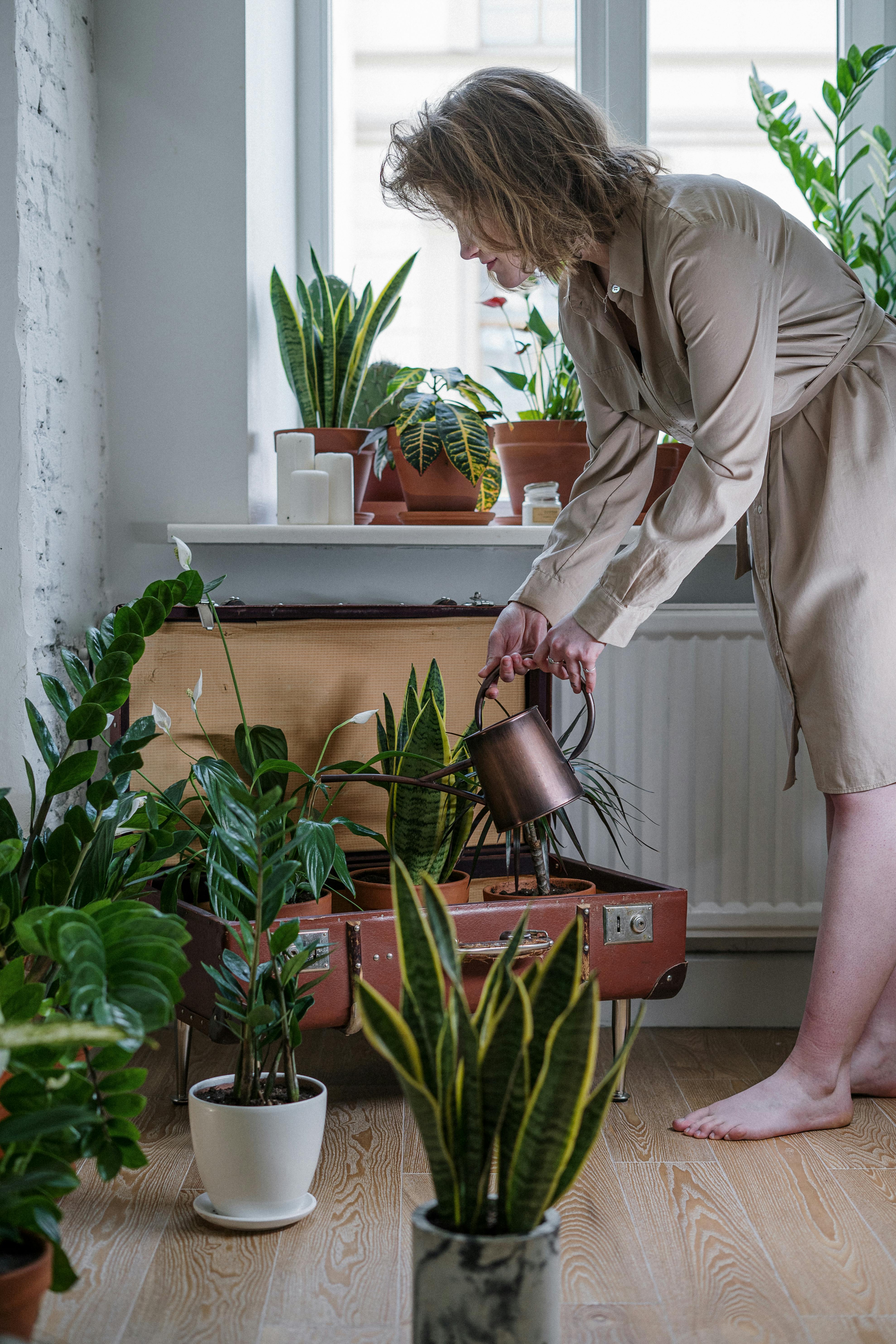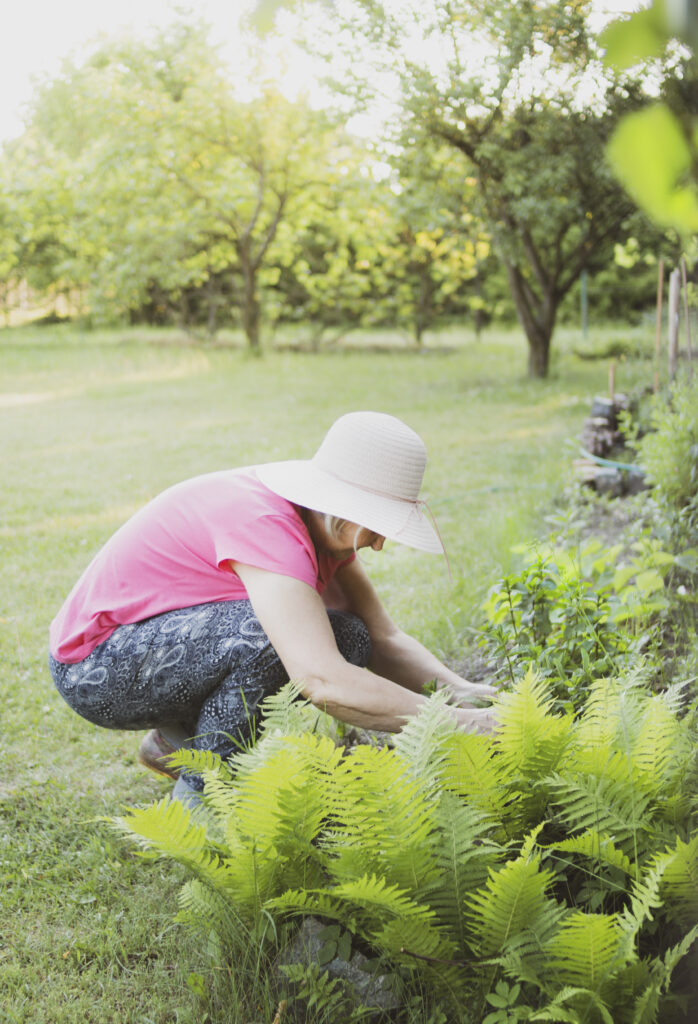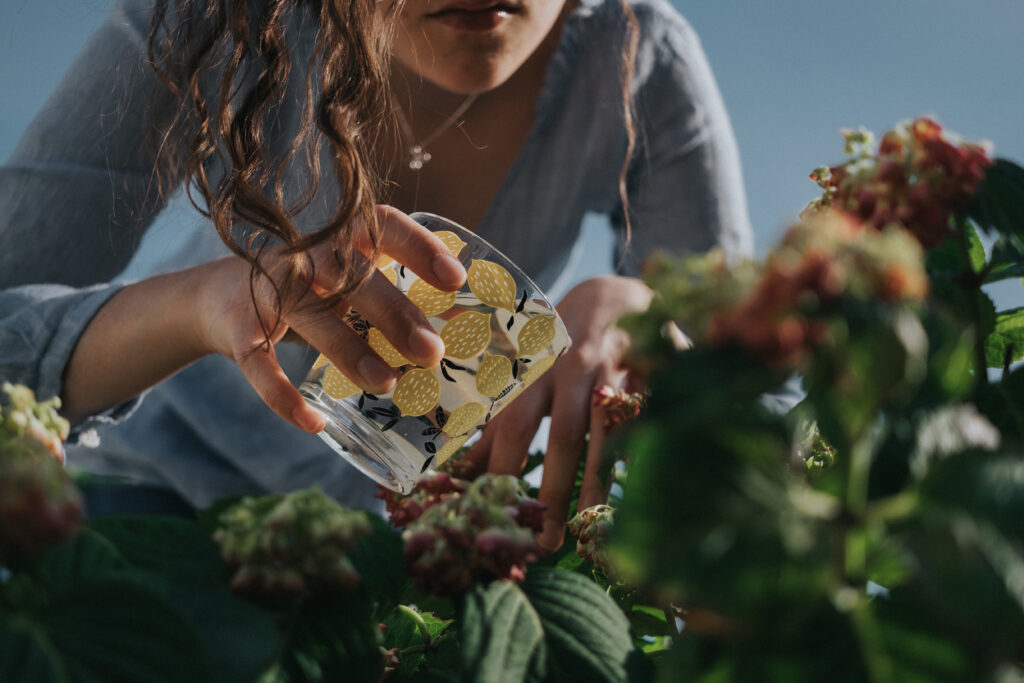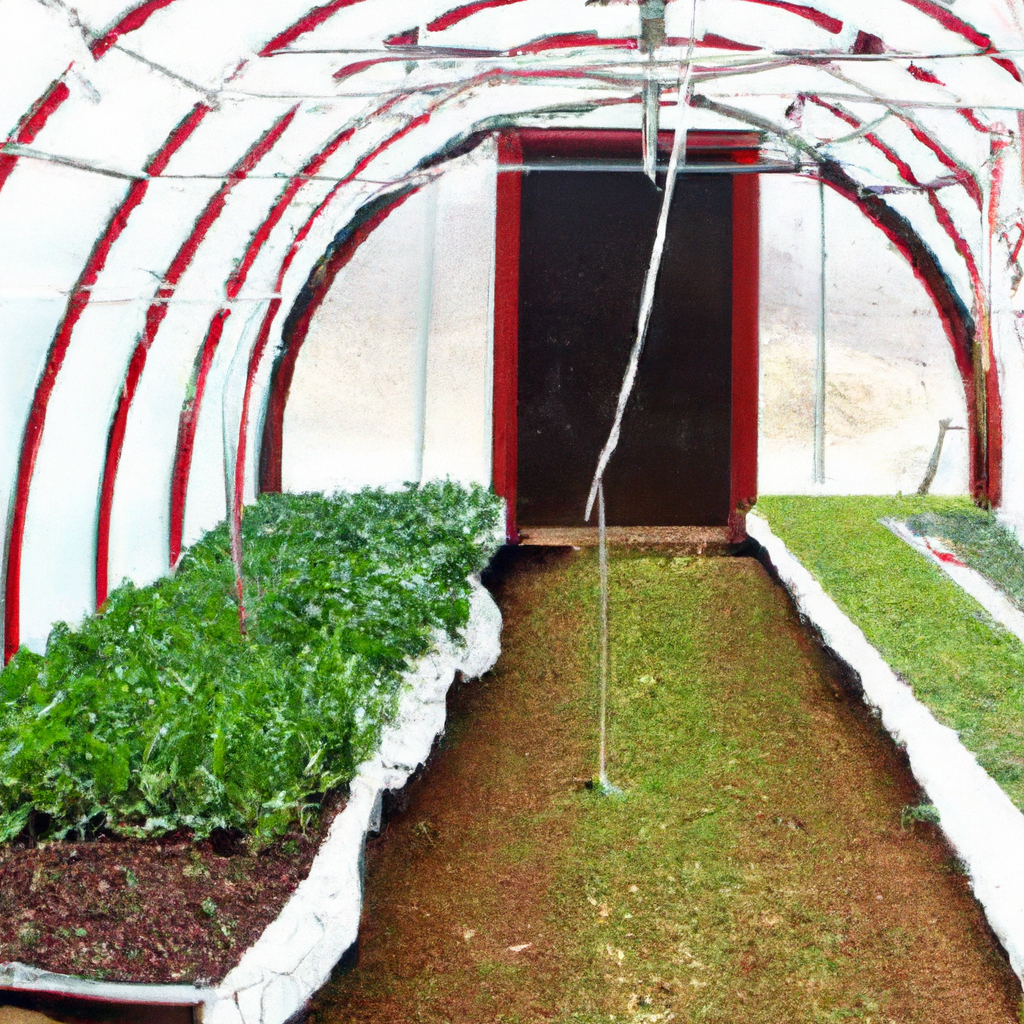
Have you ever wondered if you can utilize a greenhouse for seed saving? Well, the answer is a resounding yes! By harnessing the power of a greenhouse, you can create an ideal environment for preserving and propagating your favorite plant varieties. Not only will this enable you to save seeds for future planting, but it also opens up a whole world of possibilities for experimenting with different plants and ensuring their continued existence. In this article, we will explore the benefits of using a greenhouse for seed saving and provide you with valuable tips on how to make the most of this innovative gardening technique. Get ready to embark on an exciting journey of sustainable gardening and self-sufficiency!

This image is property of images.pexels.com.
Benefits of Using a Greenhouse for Seed Saving
Protection from External Factors
Using a greenhouse for seed saving provides protection from external factors that can negatively impact the seeds. When seeds are left outdoors, they are susceptible to damage caused by extreme weather conditions such as heavy rain, strong winds, or frost. In a greenhouse, however, the seeds are shielded from these elements, ensuring their safety and increasing the chances of successful seed saving.
Extended Growing Season
One of the key advantages of using a greenhouse for seed saving is the opportunity to extend the growing season. Greenhouses create a controlled environment, allowing you to start planting seeds earlier in the spring and continue growing plants well into the fall. This extended growing season provides more time for your plants to mature, flower, and produce seeds, resulting in a higher seed yield.
Ideal Growing Conditions
Greenhouses provide the ideal growing conditions for plants, which in turn contributes to successful seed saving. The controlled environment inside a greenhouse allows you to maintain optimal temperature, humidity, and light levels, creating a favorable environment for seed production. This ensures that your seeds have the best chance of fully developing and reaching their maximum potential.
Increased Seed Yield
Using a greenhouse for seed saving can significantly increase your seed yield compared to traditional outdoor gardening. With the ability to control various factors such as temperature, light, and moisture, you can optimize the conditions for seed production. This means that each plant has the best chance of producing a higher number of quality seeds, resulting in a more abundant harvest for future planting.
Less Dependence on External Seed Sources
By utilizing a greenhouse for seed saving, you can reduce your reliance on external seed sources. Instead of purchasing seeds every year, you can save and store seeds from your own plants, ensuring a continuous supply for future planting seasons. This not only saves you money in the long run but also promotes self-sustainability and independence in your gardening endeavors.
Choosing the Right Greenhouse for Seed Saving
Size and Space Requirements
When choosing a greenhouse for seed saving, it’s important to consider the size and space requirements based on the number of plants you intend to grow. Assess the amount of available space in your garden and determine the size of the greenhouse that will comfortably accommodate your plants and provide ample room for seed saving activities.
Type of Greenhouse
There are various types of greenhouses available, ranging from small portable structures to larger, more permanent ones. Consider factors such as your budget, the climate in your area, and your long-term gardening goals to determine the type of greenhouse that is most suitable for your seed saving needs.
Materials and Construction
The materials used in the construction of a greenhouse can affect its durability and efficiency. Common greenhouse materials include glass, polycarbonate, and polyethylene. Consider factors such as insulation properties, light transmission, and longevity when choosing the materials for your greenhouse to ensure optimal conditions for seed saving.
Ventilation and Temperature Control
Proper ventilation and temperature control are crucial for maintaining optimal growing conditions inside a greenhouse. Look for features such as adjustable vents, windows, or fans that allow you to regulate airflow and control temperatures. This will prevent overheating, excessive humidity, and stagnant air, which can negatively impact seed development and overall plant health.
Accessibility and Maintenance
Consider the accessibility of your greenhouse and ease of maintenance when selecting a suitable option for seed saving. Ensure that the design allows for easy access to the plants and seeds, making it convenient for necessary tasks such as pollination, harvesting, and cleaning. Additionally, choose a greenhouse that is easy to maintain, as regular upkeep is essential for the longevity and effectiveness of the structure.
Preparing the Greenhouse for Seed Saving
Cleaning and Sanitization
Before starting your seed saving journey, it’s important to clean and sanitize your greenhouse to eliminate any potential pests, diseases, or debris. Remove any weeds or lingering plant material from the previous season and disinfect the surfaces with a mild bleach solution or an appropriate greenhouse cleaner. This will create a clean and hygienic environment for your plants and seeds.
Organizing and Labeling
Maintaining organization within your greenhouse is essential for efficient seed saving. Set up a system for organizing your plants, labeling them with their respective names and varieties. This will help you keep track of different plants and their specific seed-saving requirements.
Seed Selection and Preparation
Select high-quality plants with desirable traits for seed saving. Look for healthy, disease-resistant plants that exhibit traits you wish to preserve for future generations. Once selected, prepare the plants for seed saving by ensuring they are adequately watered, fertilized, and protected from pests or diseases. This will promote robust and viable seeds.
Soil Preparation
Proper soil preparation is essential for healthy plant growth and optimal seed production. Ensure that your greenhouse soil is well-drained, rich in organic matter, and suitable for the specific plant varieties you are growing. Test the pH levels of the soil and make any necessary adjustments to create the perfect nutrient balance for your plants.
Seed Saving Techniques in a Greenhouse
Isolation and Cross-Pollination Prevention
To maintain the purity and integrity of your seed varieties, it’s important to prevent cross-pollination between different plant varieties. This can be done by isolating plants with physical barriers, such as using mesh or netting to separate different varieties. By ensuring adequate spacing and isolation, you can minimize the risk of unintentional cross-pollination and maintain the genetic purity of your seeds.
Identification and Harvesting
Regular observation and identification of plants at different growth stages are crucial when seed saving in a greenhouse. Familiarize yourself with the growth characteristics and flowering patterns of each plant species or variety to accurately determine the right time for seed harvest. Proper identification and timely harvesting will ensure optimal seed quality and viability.
Seed Extraction and Drying
After harvesting, the seeds need to be extracted from the plants and properly dried. Follow the specific seed-saving techniques for each plant variety, as different plants may require different methods of seed extraction. Once extracted, spread the seeds in a single layer on a clean surface or a drying rack in a well-ventilated area to allow them to dry thoroughly. Proper drying will prevent mold or fungal growth and ensure longer seed storage life.
Seed Cleaning and Storage
Once the seeds are fully dried, they may require cleaning to remove any debris or plant material. This can be done by carefully separating the seeds from unwanted particles using sieves, screens, or even your hands. Once cleaned, store the seeds in airtight containers, such as glass jars or seed envelopes, in a cool, dry, and dark place. Proper labeling with the plant variety and the date of collection will help you keep track of seed viability and usage.

This image is property of images.pexels.com.
Managing Pests and Diseases in a Greenhouse
Integrated Pest Management (IPM)
Implementing an integrated pest management (IPM) approach is crucial for controlling pests and diseases in a greenhouse environment effectively. IPM involves using a combination of preventive measures, cultural practices, biological controls, and, if necessary, targeted pesticide applications. Regular monitoring and timely intervention will help keep pest and disease populations in check and protect your plants and seed stock.
Organic Pest and Disease Control Methods
To maintain organic integrity and minimize chemical exposure, consider implementing organic pest and disease control methods. This can include introducing beneficial insects, such as ladybugs or predatory mites, to control common pests, using organic insecticidal soaps or oils, and practicing good sanitation to prevent disease spread. Organic control methods are safe for the environment, beneficial insects, and the overall health of your plants.
Regular Monitoring and Inspection
Maintaining vigilance and regularly monitoring your plants for signs of pests or diseases is essential for managing greenhouse pests effectively. Inspect both the foliage and the soil regularly, and promptly address any issues that arise. Early detection and intervention can prevent the spread of pests or diseases and ensure the health and productivity of your plants for successful seed saving.
Maintaining Optimal Greenhouse Conditions
Temperature and Humidity Control
Temperature and humidity control are critical for maintaining optimal greenhouse conditions. Install a thermometer and a hygrometer to monitor the temperature and humidity levels inside the greenhouse. Make any necessary adjustments, such as using shading or insulation during hot or cold weather, to maintain a suitable environment for plant growth and seed saving.
Proper Ventilation and Air Circulation
Good airflow and proper ventilation are essential for preventing the buildup of excess heat, humidity, or stagnant air inside the greenhouse. Install vents, fans, or windows that can be opened or closed as needed to regulate airflow and maintain a fresh and well-circulated environment. This will prevent the growth of mold, mildew, and other diseases and promote healthy plant growth.
Watering and Fertilization
Consistent and appropriate watering is crucial for plant health and seed production. Irrigate the greenhouse plants according to their specific watering needs, ensuring that the soil remains moist but not waterlogged. Additionally, provide the necessary nutrients by regularly fertilizing the plants using organic or slow-release fertilizers. Proper watering and fertilization will ensure healthy plants and the production of quality seeds.
Managing Light Levels
Proper lighting is essential for photosynthesis and overall plant growth and development. Position your greenhouse in a location that receives ample sunlight throughout the day, ensuring that plants receive the required amount of light. Consider supplemental lighting systems, such as grow lights, for areas with limited natural sunlight. Achieving the optimal light levels will support robust plant growth and seed production.

This image is property of images.pexels.com.
Common Challenges and Troubleshooting
Disease Outbreaks
Disease outbreaks can pose a significant threat to seed saving in a greenhouse. Monitor your plants regularly for signs of diseases such as powdery mildew, damping-off, or fungal infections. If you identify any issues, promptly remove and dispose of infected plants to prevent the spread of the disease. Implement proper sanitation practices and avoid overcrowding plants to reduce the risk of disease outbreaks.
Insect Infestations
Insects can wreak havoc on your greenhouse plants and affect seed production. Regularly inspect your plants for signs of insect infestations such as chewed leaves, holes, or discolored foliage. Identify the specific pest and implement appropriate control measures, such as introducing beneficial insects, using organic insecticides, or employing physical barriers to prevent insect damage.
Failure in Seed Germination
Sometimes, despite your best efforts, seeds may fail to germinate. This can be due to various factors such as poor seed quality, inadequate moisture, incorrect temperature, or improper storage conditions. To troubleshoot germination issues, ensure that you are using fresh, viable seeds, provide optimal moisture levels, maintain suitable temperature conditions, and properly store seeds to preserve their viability.
Poor Seed Quality
If you notice a decline in seed quality over time, it may be due to poor plant selection or improper seed-saving techniques. Consider reevaluating your selection criteria for the plants used for seed production and review your seed-saving practices. Adjust your methods as necessary to improve seed quality and maintain desirable traits in your seed stock.
Climate-related Issues
Extreme weather events or unpredictable climate patterns can affect greenhouse conditions and seed saving efforts. Prepare for climate-related challenges by reinforcing the greenhouse structure, installing shade cloths or insulation during extreme temperatures, and implementing additional measures to regulate temperature and humidity levels. These precautions will help protect your plants and seeds from adverse weather conditions.
Seed Saving for Different Plant Types
Annuals
Annual plants complete their life cycles within one year and are well-suited for seed saving in a greenhouse. Examples of annual plants include tomatoes, peppers, and lettuce. Select vigorous and healthy plants with desirable traits for seed saving, and follow the specific seed-saving techniques for each plant variety to ensure successful seed production.
Perennials
Perennial plants live for multiple years, and seed saving for these plants requires a longer-term commitment. Examples of perennials suitable for greenhouse seed saving include herbs like basil, oregano, and thyme. Pay attention to the specific requirements of each perennial plant, as they may have different seed-saving needs compared to annual plants.
Biennials
Biennial plants have a two-year life cycle, typically forming vegetative growth in the first year and flowering and setting seeds in the second year. Examples of biennial plants that can be successfully grown and saved in a greenhouse include carrots, beets, and onions. Allow biennial plants to overwinter in the greenhouse and provide the necessary care to promote seed production during the second year.
Open-Pollinated vs. Hybrid Varieties
When selecting plants for seed saving, consider whether they are open-pollinated or hybrid varieties. Open-pollinated plants are pollinated by natural means, such as wind, insects, or birds, resulting in seeds that produce plants similar to their parent. Hybrid plants, on the other hand, result from cross-pollination between different parent plants and may not produce reliable or consistent offspring. Focus on saving seeds from open-pollinated varieties to maintain plant diversity and reliable seed stock.

Keeping Seed Saving Records
Maintaining a Seed Inventory
Keeping a detailed seed inventory is essential for effective seed saving. Record important information such as the plant variety, date of collection, and any specific notes about the plant or seed characteristics. This will help you track your seed stock, identify any changes or improvements needed, and ensure you have a diverse selection of seeds for future planting.
Record-keeping for Future Planting
In addition to maintaining a seed inventory, record-keeping for future planting is crucial for successful seed saving. Note any observations or challenges encountered during the seed-saving process, such as germination rates, growth patterns, or specific growing requirements. This information will help you refine your seed-saving techniques and make informed decisions for future plantings.
Tracking Seed Viability
Seed viability refers to the ability of a seed to germinate and produce a healthy plant. To ensure that your saved seeds remain viable, it is important to periodically test their germination rates. Perform germination tests by planting a sample of seeds from each variety and recording the percentage of seeds that successfully germinate. This information will help you determine the viability of your seeds and ensure that you are working with seeds that have a high likelihood of germination.
Benefits of Sharing and Exchanging Seeds
Preservation of Biodiversity
Sharing and exchanging seeds with other gardeners and seed-saving enthusiasts plays a crucial role in preserving biodiversity. By diversifying the gene pool and maintaining a wide variety of plant species and varieties, we contribute to the overall health and sustainability of our ecosystems. Sharing seeds allows us to protect and promote rare, heirloom, and indigenous plant varieties that might otherwise be lost or forgotten.
Building Seed Saving Community
Participating in seed sharing and exchange activities helps to build a vibrant community of like-minded individuals who are passionate about seed saving. These communities provide opportunities to connect with fellow gardeners, share knowledge and experiences, and learn from one another’s successes and challenges. By joining seed saving communities, you become part of a collective effort to preserve, protect, and promote seed saving for future generations.
Access to Diverse Plant Varieties
Seed sharing and exchange provide a valuable opportunity to access a wide range of diverse plant varieties that may not be readily available through commercial sources. Through the generosity of other seed savers, you can gain access to unique and rare plant varieties, allowing you to experiment with different flavors, colors, and growing characteristics. This diversity expands your gardening possibilities and further enriches your seed-saving endeavors.
In conclusion, using a greenhouse for seed saving offers numerous benefits, such as protection from external factors, extended growing seasons, ideal growing conditions, increased seed yield, and reduced reliance on external seed sources. When choosing the right greenhouse, consider factors like size and space requirements, type of greenhouse, materials and construction, ventilation and temperature control, and accessibility and maintenance. Preparing the greenhouse involves cleaning, organizing, labeling, seed selection and preparation, and soil preparation. Seed-saving techniques in a greenhouse encompass isolation and cross-pollination prevention, identification and harvesting, seed extraction and drying, and seed cleaning and storage. Effective pest and disease management, maintaining optimal greenhouse conditions, troubleshooting common challenges, and adapting seed-saving techniques for different plant types are key aspects of successful seed saving. Keeping thorough records, sharing and exchanging seeds, and promoting biodiversity are crucial for the long-term sustainability and growth of the seed-saving community. With the right knowledge and practices, greenhouse seed saving can be a rewarding and eco-friendly endeavor that allows you to become more self-sufficient and play a role in preserving plant diversity.


